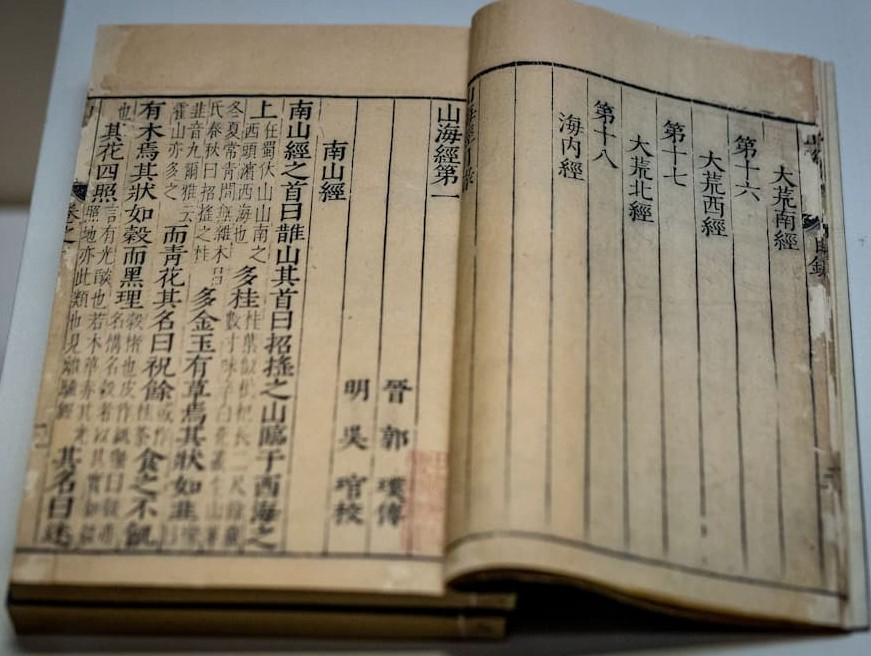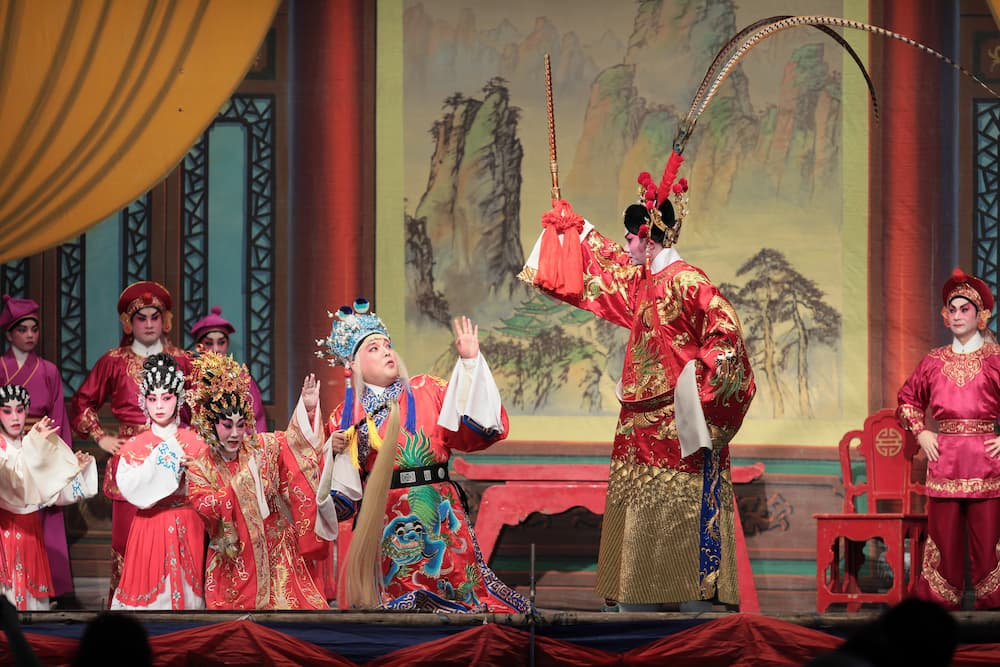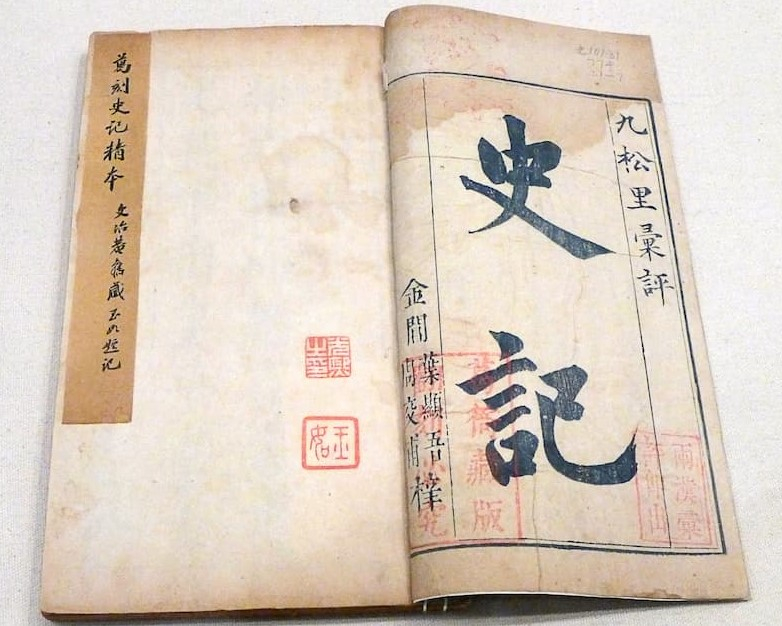
The Fantasy World of The Classic of Mountains and Seas
Splendid
Chi Culture
Topic
The Fantasy World of The Classic of Mountains and Seas
The Classic of Mountains and Seas is a paramount ancient Chinese text with a diverse range of unique and extraordinary content. Often hailed as a rare gem worldwide, it stands as a testament to ancient Chinese myths and geographical lore. There is ongoing debate about the period in which the Classic of Mountains and Seas was written and its authorship. Some suggest it was composed during the era of Emperor Yu in the Xia Dynasty, while others argue that it was more likely written between the Warring States period and the Qin and Han dynasties. Opinions regarding authorship also vary, with debates spanning from single authorship to collaborative efforts. The historical community has not definitively agreed on this matter. The entire text consists of 18 sections categorized into the Classic of Mountains, the Classic of Seas, and the Classic of Great Wilderness. Where exactly does the book describe its geographical scope? In academia, there are three main theories: the theory of ancient China, the regional focus theory, and the global perspective theory. The first viewpoint is the most widely embraced due to its strong evidence.
China is home to a plethora of myths, and the Classic of Mountains and Seas stands out as the most significant mythological texts from ancient China. Lu Xun noted, "China's myths and legends have yet to be compiled into a dedicated book, remaining scattered throughout ancient texts, with a significant concentration found in the Classic of Mountains and Seas." The book mainly encompasses creation myths, nature myths, and hero myths. The myths like "Kua Fu Chasing the Sun", "Jingwei Filling the Sea", "The Yellow Emperor's Battle against Chi You", and the legend of the "Queen Mother of the West" can be found in the Classic of Mountains and Seas. The mythological figures in the text are diverse, often combining human and animal characteristics to create unusual forms. For example, Kua Fu's image embodies a fusion of human and animal features. The text also features numerous female mythological figures, including the Queen Mother of the West, Jingwei, Ehuang, Xiaoming, Zhuguang, Nü Chou, Xihe, Nüji, Nümie, and Nüba.
What geographical characteristics and products did ancient China have? Drawing from the information in the Classic of Mountains and Seas, we can gain some insights into the various animals, plants, minerals, and geological features that existed in ancient China. The text extensively documents the diversity of biological species, like the detailed information about the growth of lacquer trees, as mentioned in the passage, "On the Yingdi Mountain, there are abundant lacquer trees." This explains the advanced and refined lacquer crafting technology in ancient China. Ancient China boasted rich geological resources, including metals such as gold, platinum, silver, hematite, iron, magnetite, copper, tin, red tin, and white tin. These minerals were intricately classified. The text highlights the prevalence of iron, suggesting the existence of iron smelting technology at that time. During that period, the primary iron production areas were located in the Qin region, alongside other states like Zhao, Wei, Han, and Chu.
Beyond mythology and resources, the Classic of Mountains and Seas offers a window into various aspects of ancient society, such as deity worship, technology, and medicine. In those times, sacrificial ceremonies included offerings of domestic animals like pigs, sheep, dogs, and chickens, as well as polished rice, jade objects, and mats made of cogongrass. The livestock and jade items were buried together underground, with the cogongrass mat serving as the seat for the mountain deity. The text also records numerous accomplishments in ancient Chinese technology, encompassing astronomy, calendars, traditional Chinese medicine, biomedical science, geology, geography, mineralogy, and the invention of various artefacts. This helps subsequent generations gain a more profound understanding of ancient Chinese scientific advancements. For instance, the text portrays mountains where the sun and moon rise and set, reflecting the ancient Yin-Yang calendar system. Furthermore, scholars suggest that Zhulong described in the book might represent the aurora borealis, given its resemblance to the phenomenon with its "human-faced, snake-bodied, and red" appearance and a "body stretching over a thousand miles".
The Classic of Mountains and Seas also documents abundant medical knowledge, showcasing the blend of practices between witchcraft and medicine in ancient times, which later evolved into the independent development of traditional Chinese medicine. It contains a diverse range of medicinal herbs and drugs, a multitude of disease names and types, and a wide array of treatment methods. It documents 124 types of medicinal substances, ranging from herbs, minerals, soil, water elements, wood, birds, beasts, and mythical creatures, to intermediates. The content encompasses symptoms of 57 diseases in internal medicine, surgery, ophthalmology, dermatology, and reproductive medicine. Additionally, it explores toxicology, veterinary medicine, and pet care.
The Classic of Mountains and Seas has not only garnered attention in China but also captured the interest of scholars abroad. During the Tang and Song dynasties, the text had already made its way to Japan, influencing Japanese yokai and anime culture. In 1891, a French scholar translated the book, making it the earliest foreign language version.







